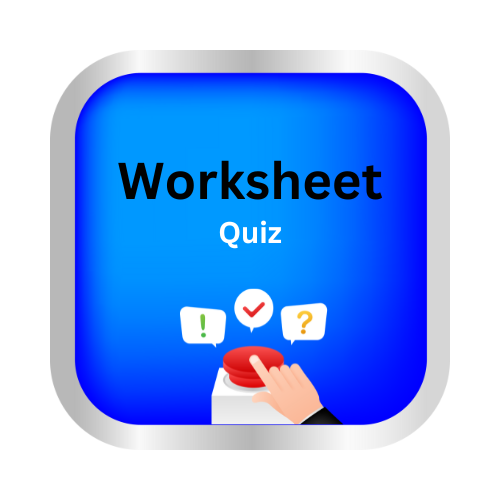Probability of independent and dependent events
Key Notes:
1. Probability Overview
- Probability is a measure of the likelihood or chance that a specific event will occur. It is calculated by dividing the number of favorable outcomes by the total number of possible outcomes.
- Probability ranges from 0 (impossible event) to 1 (certain event).
2. Independent Events
- Definition: Two events are independent if the occurrence of one event does not affect the occurrence of the other event.
- Example: Tossing a coin and rolling a die. The result of the coin toss does not affect the die roll.
- Probability of Independent Events:
- If A and B are independent events, the probability of both A and B occurring is:
P(A and B)=P(A)×P(B)
- For example, the probability of tossing a head (P(A) = 1/2) and rolling a 3 on a die (P(B) = 1/6) is:

3. Dependent Events
- Definition: Two events are dependent if the occurrence of one event affects the occurrence of the other event.
- Example: Drawing cards from a deck without replacement. The first draw affects the probability of the second draw.
Probability of Dependent Events:
- If A and B are dependent events, the probability of both A and B occurring is: P(A and B)=P(A)×P(B∣A)
- where P(B∣A)P(B|A)P(B∣A) is the conditional probability of B occurring given that A has occurred.
- For example, if you draw a card from a deck and it is a heart (P(A) = 13/52), the probability of drawing another heart on the second draw (without replacement) would be:

Learn with an example
You spin the spinner twice.

What is the probability of landing on an even number and then landing on a 5?
Write your answer as a percentage.
______ %
The events even and 5 are independent. The first spin does not affect the second spin.
Find P(even). The spinner has 4 equal sections, numbered 4, 5, 6 and 7. The even numbers are 4 and 6. There are 2 even numbers.
P(even) = 2/4
Find P(5).
P(5) = 1/4.
Find the probability of landing on an even number and then landing on a 5. Multiply P(even) by P(5).
P(even) x P(5) = 2/4 x 1/4 .
= 2/16 .
Write your answer as a decimal. Then convert your answer to a percentage.
2/16 = 0.125 = 12.5%
The probability of landing on an even number and then landing on a 5 is 12.5%.
You roll a 6-sided die two times.

What is the probability of rolling a number less than 5 and then rolling a number greater than 5?
Simplify your answer and write it as a fraction or whole number.
The events less than 5 and greater than 5 are independent. The first roll does not affect the second roll.
Find P(less than 5). The die has 6 sides, numbered 1, 2, 3, 4, 5 and 6. The numbers less than 5 are 1, 2, 3 and 4. There are 4 numbers less than 5.
P(less than 5) = 4/6 .
Find P(greater than 5). The only number greater than 5 is 6. There is 1 number greater than 5.
P(greater than 5) = 1/6 .
Find the probability of rolling a number less than 5 and then rolling a number greater than 5. Multiply P(less than 5) by P(greater than 5).
P(less than 5) x P(greater than 5) = 4/6 x 1/6 .
= 4/36 .
Write your answer in simplest form.
4/36 = 1/9 .
The probability of rolling a number less than 5 and then rolling a number greater than 5 is 1/9.
You pick a card at random. Without putting the first card back, you pick a second card at random.

What is the probability of picking a prime number and then picking a prime number?
Write your answer as a percentage.
_______ %
Find P(prime). There are 4 cards, numbered 6, 7, 8 and 9. The only prime number is 7.
P(prime) = 1/4 .
Now find the probability of picking a prime number once you have already picked a prime number.
There are 3 cards remaining. None of those cards is a prime number.
After you have picked a prime number, the probability of picking a prime number is 0.
Find the probability of picking a prime number and then picking a prime number. Multiply P(prime) by P(prime).
P(prime) x P(prime) = 1/4 / 0/3
= 0/12
Write your answer as a decimal. Then convert your answer to a percentage.
0 = 0 = 0%
The probability of picking a prime number and then picking a prime number is 0%.
Let’s practice!🖊️

